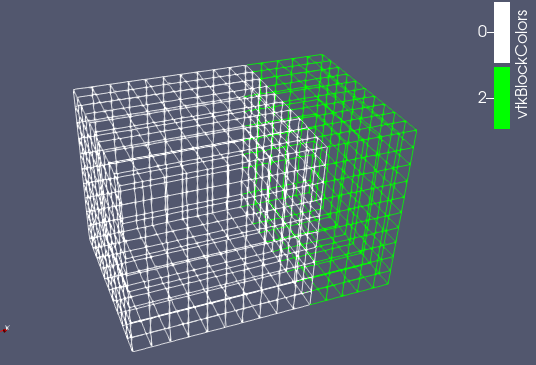

PARAVIEW CONNECTIVITY SOFTWARE
In this section, you will deploy the Cloud CFD solution, an auto-scaling HPC cluster with the Slurm job scheduler and software that supports computational fluid dynamics workflows, including Paraview. For the Ports and Protocols, check the box next to "tcp" and set the port to 11000.For the Source IP Ranges, add your external IPv4 Address.Set the Targets to "All instances in the network".Set the Firewall Rule Name to "allow-pvserver-tcp".Open your VPC Network Firewall Settings in Google Cloud.In this section you will configure your firewall rules in Google Cloud Platform to permit a reverse SSH connection from Paraview server to your local Paraview Client.


Type in your GSuite account, Cloud Identity Account, or Gmail account under "Members".Navigate to IAM & Admin > IAM in the Products and Services menu.To give yourself the necessary IAM roles to complete this tutorial Escalate privileges on GCE VM instances.Create/Delete Google Compute Engine (GCE) VM instances.We will configure IAM policies to give you sufficient permissions to accomplish the following tasks In this tutorial, we assume you are filling the system administrator and compute engine administrator roles. Additionally, OS Login integrates with GCP's Identity and Access Management (IAM) system to determine if users should be allowed to escalate privileges on Linux systems. On Google Cloud Platform, the OS Login API provisions POSIX user information from GSuite, Cloud Identity, and Gmail accounts. System users are generally researchers, scientists, and application engineers that only need to leverage the resources to execute jobs. System administrators generally have "root access" enabling them to manage and operate compute resources. In HPC, there are clear distinctions between system administrators and system users. Sufficient Compute Engine Quota (24 vCPUs and 100 GB PD-Standard Disk).Google Cloud Platform Project with Billing enabled.GSuite, Cloud Identity, or Gmail Account.
PARAVIEW CONNECTIVITY HOW TO

Please change the build path accordingly, in case of running. SaveData('surf176.stl', proxy=extractSurface1, FileType='Ascii') Threshold1.ThresholdRange = ĮxtractSurface1 = ExtractSurface(Input=threshold1) Threshold1 = Threshold(Input=connectivity1) GenerateSurfaceNormals1.FeatureAngle = 15.0Ĭonnectivity1 = Connectivity(Input=generateSurfaceNormals1) # Properties modified on generateSurfaceNormals1 GenerateSurfaceNormals1 = GenerateSurfaceNormals(Input=mesh176_rightstl) Mesh176_rightstl = FindSource('mesh176_right.stl') (ParaViewBuildPath + "lib/python3.7/site-packages/vtkmodules") (ParaViewBuildPath + "lib/python3.7/site-packages") ParaViewBuildPath = "/home/ParaView-5.7.0/" How to save stl file? import sys #sys- append path
PARAVIEW CONNECTIVITY CODE
Below is the snipped of the code where SaveData is used to save the file. The code is used as per the trace obtained from paraview. It runs perfectly, but it does not save the splitted mesh as needed. Now, I used the code in python to run it. I traced the method using python trace in paraview. I used one stl file to split the stl using Paraview.


 0 kommentar(er)
0 kommentar(er)
